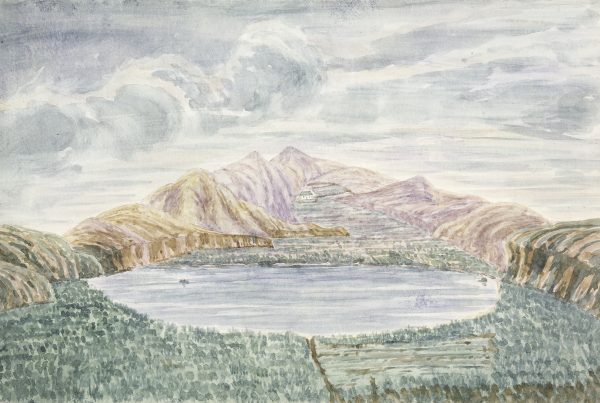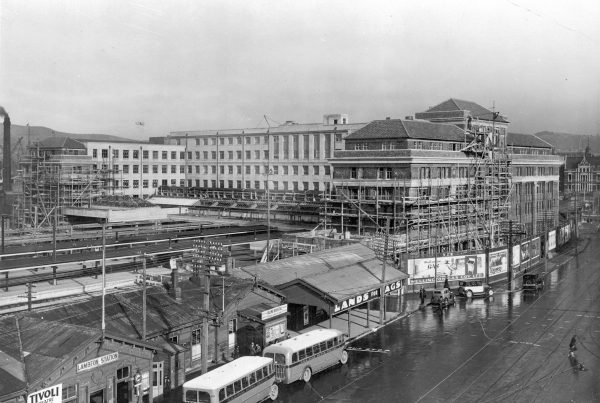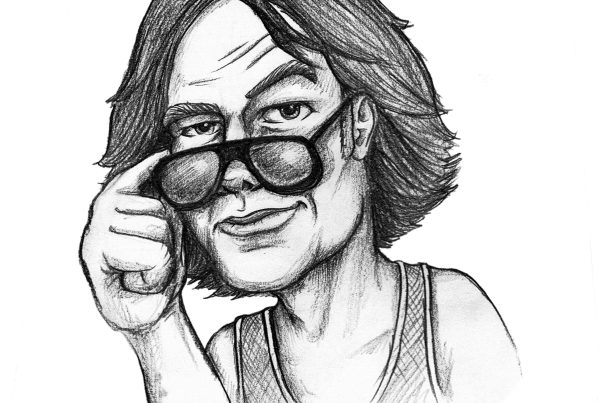Wellington is a city near and dear to our hearts. But to outsiders it must seem like a daunting destination. It is the world’s most southern capital city, and is also the most remote capital city on the globe. Here it is, life bristling within windswept hills, which gaze out towards the Southern Alps and the Southern Ocean beyond. Its airport can be buffeted by blustery winds, its roads often lashed by rain and its ferries cancelled by rolling swells. But it can also be the greatest city on Earth.
When notable guests have turned up on our shores, they have frequently experienced the full reception from Wellington’s landscapes and people. Visitors have faced a spectrum of Wellingtonian emotions – joy, anger, hysteria, adoration and grief. To celebrate our celebrity past, FishHead has delved into the files at the National Archives to find these pieces of history – snapshots of times where Wellington and its people brushed shoulders with world-famous outsiders.
The Beatles
The Beatles were responsible for the fluttering hearts and the fervent madness that swept the capital in 1964, when they played two shows at Wellington Town Hall. Scenes at the airport were chaotic, with the throbbing crowds of young women almost proving too much for the 30 police officers who tried to keep them contained behind a wire fence.
They were g
It was pandemonium on the street below, with police having to use dogs to clear the crowds of screaming girls and police motorcycles damaged by the teenagers. The band’s concerts weren’t any calmer either. They were framed by stage invasions, high-pitched screams and stiletto heels piercing leather seats as fans stood on them for a better view. In a truly parochial moment, John Lennon was able to make an unlikely reunion with second cousins from Levin, while Ringo Starr met with family members in Karori.
The Rolling Stones
The Rolling Stones have a notorious reputation. They have often been described as the greatest show on Earth and the original bad boys of rock. They are the sinners whose hard lifestyles of sex, drug abuse and alcoholism fused to create the blueprint of modern rock music.
The band’s shows have inspired many hair-raising legends, but it was in Wellington in 1966 where they met their match. The band had already toured the city in 1965 but returned the following year for more performances in both the capital and Auckland. The 1965 shows had been marked by fans trying to rush the stage to seize Mick Jagger.
However, the 1966 show at the Wellington Town Hall was an even more intense affair, with a number of people again invading the stage to get close to band members. At one point a man leapt from the audience and attacked Mick Jagger, before being dragged off by security personnel.
The show got so out of hand that Bill Wyman and Keith Richards cut the power to their guitars and withdrew to the relative safety of the side of the stage before order was restored to the venue. It’s believed a girl later fell from the theatre balcony, suffering injuries and dislocating her legs. Reports from the time indicate that the Auckland show was much calmer.
Royals
Wellington has been well serviced by Royal visits. These include Prince Charles’s birthday party at the Governor-General’s residence in 2012 – which included a massive fruitcake adorned with parochial emblems of Kiwiana culture such as jandals and rugby balls made of icing. Charles and Camilla were jostled by throngs numbering in their thousands on a walkabout along the Wellington waterfront. Prince William’s visit in early 2010 to open the new Supreme Court building also drew massive crowds.
However, some Royal visits are more notable than others. Late on 24 December 1953, the Tangiwai rail disaster occurred near Mt Ruapehu. One hundred and fifty-one people were killed when the train they were travelling in caused the lahar-damaged Whangaehu River Bridge to collapse, sending the engine and five carriages plummeting into the floodwaters below.
The event plunged the nation into shock and mourning. Twenty bodies were never recovered, presumed swept away by the force of the floodwaters into the ocean – some 120 kilometres away. The disaster took place at a time coinciding with the Royal Tour of 1953 and 1954. The Queen moved immediately to respond in the aftermath while making her Christmas broadcast, finishing with a message of sympathy to the nation. Prince Phillip attended a burial service in Karori Cemetery on 31 December to mark New Zealand’s worst ever rail accident, where he spent time solemnly talking to people attending the mass burial of the Tangiwai disaster victims.
Ernest Shackleton
Explorer Ernest Shackleton is famed for his expeditions across the Antarctic, and en route spent time in New Zealand. In 1907 he used Lyttelton as a base for the Nimrod expedition, which aimed to penetrate further south than any previous trips to the Antarctic, getting within 160 kilometres of the South Pole.
However, Shackleton’s association with New Zealand was not always one of success. The Imperial Trans-Antarctic Expedition failed when the Endurance was crushed in the ice in October 1915, and the explorer and his party were marooned. They made a risky voyage in the ship’s lifeboats, which meant five tormenting days on the open sea before they landed on inhospitable Elephant Island. Rescue was unlikely as the island was nowhere near shipping lanes – and so Shackleton decided to risk a 1,500-kilometre open-boat journey to South Georgia, where whalers could help them.
Shackleton and five others completed the frigid voyage in perilous conditions, and then returned to Elephant Island with the help of the Chilean authorities to rescue the men he left there.
Shackleton then travelled to New Zealand to meet his expedition’s other ship, the Aurora, which had drifted from its mooring in Antarctica – a calamity that had left the Ross Sea party stranded at Cape Evans in McMurdo Sound. Before setting southwards again to rescue them, he spent time in Wellington experiencing wilds of a different kind – wandering in the hills of the Rimutakas for fresh air and exercise. For a man who had been through such physical and mental hardships, Shackleton could still acknowledge good times, scrawling on the back of a snapshot marking the jaunt, “Memories of a happy day”.
Mark Twain

The author stayed only three days in Wellington, pausing to gather energy for the return leg to Australia. He spent his time walking and enjoying social privileges, and idling around what he described as the “magnificent gardens” of the Hutt. He called Wellington a “fine city and nobly situated; a busy place, and full of life and movement”. Twain boarded the Mararoa to Sydney on 13 December. He said his time in New Zealand was all too brief. Wellington was the last he saw of the country, and he gave it the endorsement that he was “not unthankful” for the glimpse he had of it.
Eleanor Roosevelt
Eleanor Roosevelt visited Wellington in late August and early September 1943. The main reason for her visit was to see US troops stationed in the area, to see the operations of the American Red Cross in action, and to see more of the contribution of New Zealand women to the war effort.
The First Lady, wife of then US President Franklin D. Roosevelt, was also fully occupied by the Second World War and the ongoing efforts of the American forces fighting in all quarters of conflict. Wellington was a huge stationing post for US Marines. Eleanor’s trip is an incredible feat to imagine – coming across the Pacific during the height of the war, through waters where Japanese naval forces operated, in order to reach New Zealand.
While Eleanor’s husband was by no means fragile, he was a sick man. His paralytic illness was largely kept from public view, but it was something his wife had to grapple with. His ailing health would ultimately fail in 1945, leaving his family and the whole nation in mourning.
While Eleanor Roosevelt lived on to see the end of the Second World War, she had sacrificed much in supporting her husband and conducting her own work during the conflict. Admiral William Halsey, Jr praised her visit to the South Pacific, saying “she alone accomplished more good than any other person, or any groups of civilians, who had passed through my area”.
The Polish Children of Pahiatua
Not all out-of-towners are short-term visitors. One of the most touching events in Wellington’s history was the arrival of 733 Polish children in 1944. They were refugees from the Second World War, which was still raging across Europe and throughout the Pacific at the time of their arrival. Prime Minister Peter Fraser, Polish Consul Count Kazimierz Wodzicki and his wife, Countess Maria Wodzicka, welcomed the children to New Zealand on board the USS General Randall in Wellington. The refugees completed their long journey by taking two special trains from Wellington to Pahiatua, and were farewelled from Wellington Railway Station by a crowd of hundreds of schoolchildren waving New Zealand and Polish flags – treatment that continued at stations further up the line.
The young refugees’ destination was a camp that had been set up in 1942 to house German and Japanese nationals deemed ‘aliens’ by the state, but had been converted for the children’s needs. The financial assistance of the exiled Polish government was discontinued after a while, and so the care of the children fell to the New Zealand government. These Polish children put down roots, and their contribution to communities around New Zealand – including Wellington – has been immeasurable ever since.
The Springboks 1981 Tour
Sometimes visitors aren’t made to feel welcome. That was definitely the case in 1981 when the tide of popular opinion had already turned against apartheid in South Africa and the voices of opposition reached full crescendo. The Springboks tour was the catalyst for nationwide protest action, and Wellington was no different.
The flashpoint of the tour in the capital occurred in the late afternoon of 29 July, when 2,000 anti-tour protestors gathered near Parliament with the intention of marching up Molesworth Street to protest at the home of South Africa’s consul to New Zealand. They were met by lines of police officers who had created a staunch position on Molesworth Street, passing an order to protestors that they were not to move any further.
That order fell on deaf ears, and as the crowd marched they were forcibly stopped by police officers armed with batons. There was confusion about which side was to blame, with the police claiming the activists had blatantly refused to obey instructions and protestors claiming the volume of marchers behind those at the front forced them forward into police lines. However, the result of the action was undeniable – protestors were left bleeding and in disarray, with some dissolving back into the city while others struck up a chant of “Shame, shame, shame!”
The rugby test in Wellington took place on 29 August following the cancellation of two matches in Hamilton and Timaru. The Springboks emerged victorious in the capital, defeating New Zealand 24–12.
Sir Laurence Olivier and Vivien Leigh

There’s no understating the star power the couple had. Having been knighted the year before, Olivier had also just won the Oscar for Best Actor for his role in Hamlet, a film production he also directed. Vivien Leigh was a heavy hitter, having already won the first of her Best Actress Oscars, for Gone With the Wind in 1939.
It’s apparent, however, that while in Wellington Olivier was ill. Theatre sheets for The School for Scandal at the St James Theatre advised that he was indisposed and Derrick Penley would take his part instead. A photographer for the Evening Post later captured a shot of him screwing his eyes up at the rain while being hoisted in a stretcher by ambulance men on to the Corinthic at Glasgow Wharf on 16 October, presumably while the group left Wellington.
Vivien Leigh had been diagnosed with tuberculosis some years earlier, and also suffered from depression and bipolar disorder. The tour took its toll on their relationship, too, with several major arguments between them during the trip.
US President Lyndon Johnson

President Johnson’s whirlwind visit in 1966 sparked massive interest, with tens of thousands of Kiwis cramming the streets of Wellington to get a glimpse of him. Momentum was against anti-war protesters, with their banners torn down by cheering members of the public when they tried to target the President at Parliament on 20 October.
Ultimately, Johnson’s visit achieved its aims. The last New Zealand troops left Vietnam on 22 December 1972, with the final casualty figures reaching 39 dead and 189 wounded.











